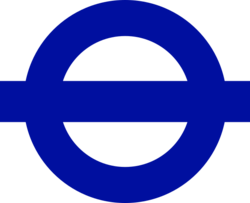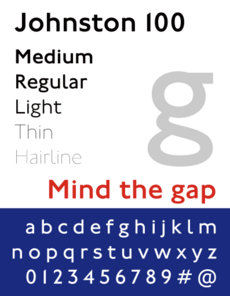Transport for London facts for kids
 |
|
| Abbreviation | TfL |
|---|---|
| Formation | 3 July 2000 (Greater London Authority Act 1999) |
| Type | Statutory corporation |
| Legal status | Executive agency within GLA |
| Purpose | Transport authority |
| Headquarters | 5 Endeavour Square London E20 1JN |
|
Region served
|
London, England |
|
Chairman
|
Mayor of London (Sadiq Khan) |
|
Commissioner
|
Andy Lord |
|
Main organ
|
|
|
Parent organisation
|
Greater London Authority (GLA) |
|
Budget
|
2019–20: £10.3 billion (47% of this from fares) |
|
Staff
|
28,000 |
Transport for London (or TfL) is a special group that manages most of the transport network in London, United Kingdom. It helps millions of people travel around the city every day.
TfL was created in 2000. It took over from older transport groups, like the London Passenger Transport Board, which started in 1933. Today, TfL runs many different ways to get around London. This includes the London Underground (the Tube), the Docklands Light Railway, buses, taxis, and even river boats.
TfL also looks after major roads, bike paths, and trams. While it doesn't control all national train services, it does manage the London Overground and Elizabeth line trains. Some services are run by TfL directly, like the Tube. Others are run by private companies under TfL's rules, like most buses and trams. TfL sets the prices for tickets, which are often based on different travel zones across London.
Over the years, TfL has brought in many new things to make travel easier. They introduced the Oyster card and contactless payments for quick and easy travel. In 2016, they started the Night Tube scheme, which means some Tube and Overground lines run all night. One of their biggest projects was the Crossrail Project, which opened in 2022 as the Elizabeth line. TfL now manages this important new train line.
Contents
- How Did London's Transport Begin?
- Congestion Charge: Making Roads Less Busy
- Taking Over the Tube: A Big Change
- Responding to Challenges: Safety and Growth
- Building the Elizabeth Line: A Huge Project
- Women in Transport: Celebrating Contributions
- Cleaner Air: The Ultra-Low Emission Zone
- Dealing with the Pandemic: Keeping London Moving
- How Transport for London Works
- How to Pay for Travel
- TfL's Look and Feel
- See also
How Did London's Transport Begin?
London's public transport system was first brought together in 1933. This was when the London Passenger Transport Board was created. Over the years, this group changed names several times, but it always used the "London Transport" brand.
Transport for London was officially formed in 2000. It became part of the Greater London Authority (GLA), which is like London's main government. The Mayor of London is in charge of TfL.
Congestion Charge: Making Roads Less Busy
On 17 February 2003, TfL introduced the London congestion charge. This is a fee that drivers have to pay if they drive into central London during certain hours. The idea was to reduce traffic jams and make the city better for businesses. The money collected from this charge is used to improve London's transport system. It was a very big project for a capital city at the time.
Taking Over the Tube: A Big Change
In 2003, TfL took over running the London Underground. Before this, some parts of the Tube's maintenance were handled by private companies. This was a bit controversial. The plan was for these private companies to improve the tracks, trains, tunnels, and stations over 30 years.
However, some of these companies ran into money problems. By 2010, TfL decided to take full control of all Tube operations and maintenance. This meant the entire London Underground system was back under public ownership.
Responding to Challenges: Safety and Growth
TfL faced a very difficult time on 7 July 2005, when there were bombings on the Tube and bus systems. Many TfL staff helped people and worked hard to get the transport system running again. This event led to new safety measures, like improving radio connections underground.
In 2007, TfL launched the London Overground. This new train service took over some suburban train lines. TfL promised to make these lines better by running more trains, improving stations, and allowing people to use their Oyster cards easily.
Building the Elizabeth Line: A Huge Project
Between 2008 and 2022, TfL was involved in building the Crossrail project. This was a massive new train line designed to carry many passengers across London and its suburbs. It was a huge undertaking, costing billions of pounds.
The line officially opened in May 2022 and was named the Elizabeth line in honor of Queen Elizabeth II. It has greatly improved travel across London.
Women in Transport: Celebrating Contributions
In 2014, TfL started a campaign called "100 years of women in transport." This celebrated the important role women have played in transport, especially since World War I. During the war, many women started working in transport jobs that men had left to join the army.
Cleaner Air: The Ultra-Low Emission Zone
TfL has also worked to improve air quality in London. In 2019, the Ultra–Low Emission Zone (ULEZ) was introduced. This means that older, more polluting vehicles have to pay a fee to drive in certain areas. The ULEZ was expanded in August 2023 to cover all of London, aiming to make the air cleaner for everyone.
Dealing with the Pandemic: Keeping London Moving
In 2020, during the COVID-19 pandemic, fewer people used public transport. TfL had to reduce services and close some stations to help stop the spread of the virus. They asked people to only use public transport if it was absolutely necessary, mainly for essential workers. TfL also introduced new safety measures, like asking bus passengers to use middle doors to protect drivers.
How Transport for London Works
TfL is managed by a board chosen by the Mayor of London, who is currently Sadiq Khan. The main leader of TfL is called the Commissioner. They lead a team that manages different parts of London's transport.
TfL is split into different groups, each looking after specific types of transport:
- London Underground: This group runs London's underground train network, also known as the Tube. It includes lines like the Bakerloo, Central, Victoria, and Piccadilly lines.
- Elizabeth line: This is a fast train service that runs across London. Private companies help operate and maintain it.
- Surface Transport: This is a big group that handles many other ways to travel:
- Docklands Light Railway (DLR): An automatic train system in East and South London.
- London Buses: Manages London's famous red bus network. Private companies run most of the bus services.
- London Dial-a-Ride: Provides special transport services for people who need extra help.
- London Overground: Manages certain suburban train services within London.
- London River Services: Looks after boat services on the River Thames.
- London Streets: Manages London's main roads.
- London Trams: Manages London's tram network, mainly Tramlink in South London.
- London congestion charge: Manages the fee for driving in central London.
- Public Carriage Office: Licenses London's black cabs and private hire cars.
- Victoria Coach Station: Owns and runs London's main station for long-distance buses.
- Cycling and Walking: These teams encourage people to cycle and walk more, building bike paths and making streets safer for pedestrians.
- Road Safety and Community Safety: These groups work to make roads safer and prevent crime on public transport.
Where TfL Manages Traffic
TfL has a special place called the Surface Transport and Traffic Operations Centre (STTOC). It was opened in 2009. This center watches and manages traffic jams, accidents, and big events in London. It brings together different teams that control buses, roads, and police traffic operations.
The STTOC was very important during the 2012 Summer Olympics for keeping traffic flowing smoothly.
London Transport Museum: Exploring History
TfL also owns and runs the London Transport Museum in Covent Garden. This museum shows the history of London's transport system over the last 200 years. It has old vehicles, signs, and advertising. The museum also has a large storage area in Acton with even more items, which sometimes opens to the public.
How to Pay for Travel
TfL has different ways to pay for journeys on its transport. Buses and trams have one system, while the Tube, DLR, Overground, and National Rail services have another.
London's Fare Zones: How Prices are Calculated
Train and Tube fares in London are based on a zonal system. London is divided into eleven zones, like rings spreading out from the city center. Most stations are in one or two zones. The further out you travel from Zone 1, the more zones you cross, and the fare might change.
- Zone 1
- Zone 2
- Zone 3
- Zone 4
- Zone 5
- Zone 6
- Zones 7–9, C, G and W
Travelcard: All-in-One Ticket
The Travelcard is a special ticket that lets you travel on the DLR, buses, trains, trams, and the Tube. You can buy them for one day or up to a year. They often give you a discount on river boat services too.
Oyster Card: Tap and Go
The Oyster card is a smart card introduced in 2003. You can put money on it and "pay as you go" for individual journeys. You just tap the card on a yellow reader at ticket gates or special card readers. Oyster cards can also hold Travelcards. Since 2010, you can use Oyster Pay as you go on all National Rail services within London. There's a daily limit on how much you pay, so you won't spend more than the cost of a Day Travelcard.
Contactless Payments: Using Your Bank Card
TfL also lets you use contactless payment cards, like your debit or credit card, to pay for travel. This works just like an Oyster card. You tap your bank card or even your phone (using Apple Pay, Google Pay, or Samsung Pay) on the yellow reader. TfL is one of the biggest users of contactless payments in Europe. Many other cities, like New York and Sydney, have even used TfL's technology for their own transport systems.
TfL's Look and Feel
Each part of TfL, like the Tube or London Buses, has its own special logo. These logos use the famous "roundel" symbol (a circle with a bar through it) but with different colors and words. The blue roundel without words represents TfL as a whole. These colors and symbols are used everywhere, from signs to websites.
TfL often uses art and design to celebrate London's transport. For example, in 2010, they commissioned an artist to create "Labyrinth" plaques for all 270 Tube stations to celebrate the Underground's 150th anniversary.
The Johnston Typeface: A Special Font
The special letters you see on Tube signs and TfL posters are part of a unique font called Johnston. It was designed in 1913 by Edward Johnston to give London's Underground a strong, clear look.
The font was updated in 1979 to "New Johnston" and has been used by TfL ever since. In 2016, a new version called "Johnston 100" was made to celebrate 100 years of the font, making it even closer to the original design.
Advertising Rules: What Can Be Advertised
TfL has rules about what kind of advertisements can be shown on its network. In 2019, TfL banned ads from some countries due to human rights concerns. Also, the Mayor of London, Sadiq Khan, introduced rules against advertising unhealthy food and drinks. This was done to encourage healthier eating habits in London. Studies have shown that this rule has helped reduce how much chocolate and sweets people buy.
|
See also
 In Spanish: Transport for London para niños
In Spanish: Transport for London para niños







